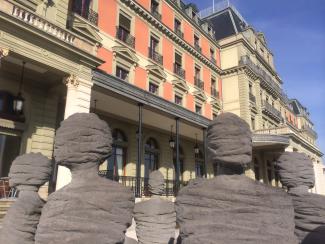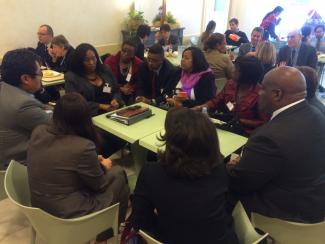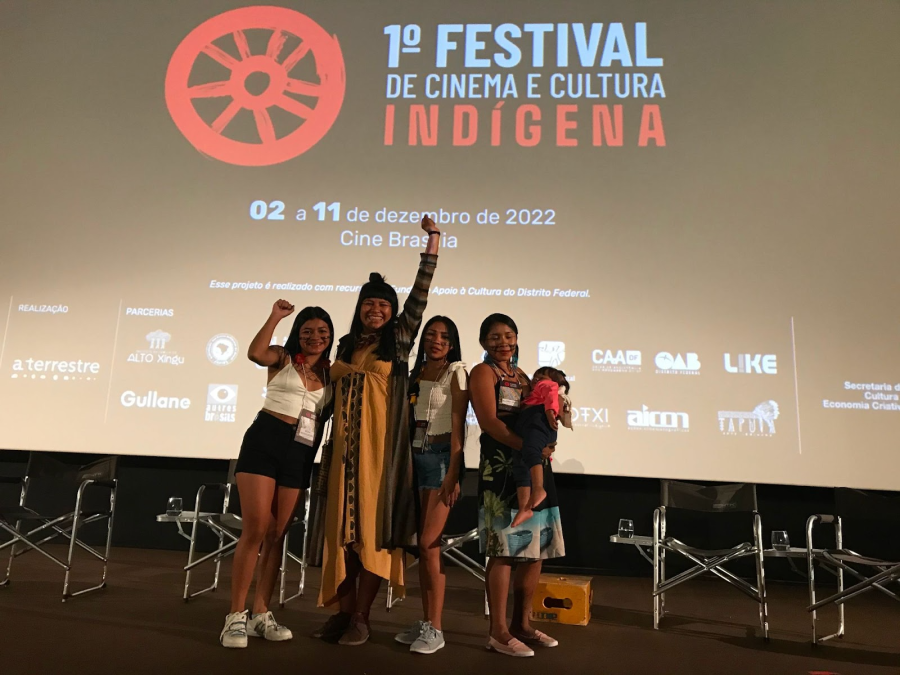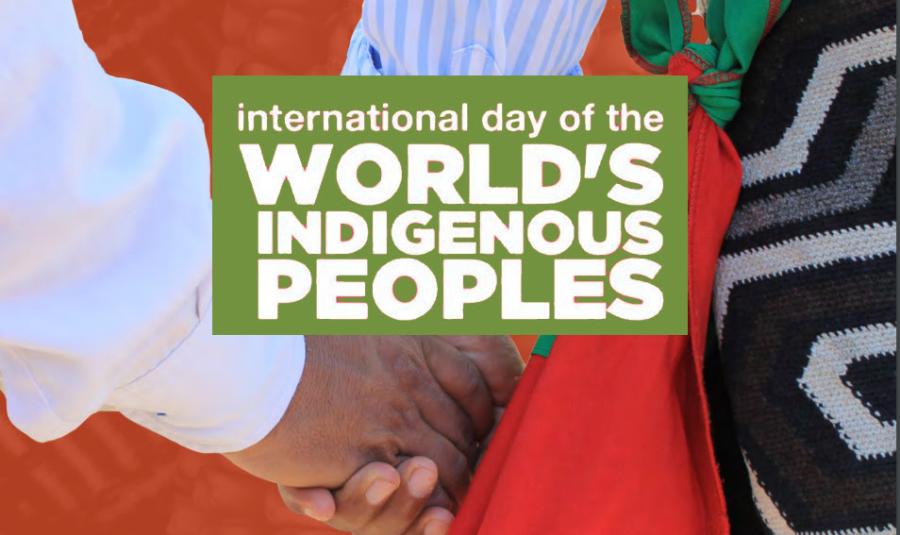

Human rights are measured through United Nations human rights conventions and covenants. Regular reviews monitor how states are realizing the rights recognized in the treaties. Civil society can influence international institutions by participating in every phase of the review process. Involvement of Indigenous Peoples is imperative to seek justice through every review and contribute to global standard setting. In this series we aim to break down the core treaties. The review of every nation offers NGOs a chance to educate citizens about their rights and engage together to demand realization of rights enshrined in the treaties ratified by their governments.
Indigenous Peoples have long been the target of government-sanctioned, systemic actions intended to intimidate and cause harm. The Convention Against Torture and Other Cruel, Inhuman or Degrading Treatment or Punishment (CAT) is a human rights mechanism created to criminalize such actions, as well as to provide an enforceable right to redress. There are measures to train and educate state officials at every phase of interaction from arrest to imprisonment. There is also a process for cases to be raised with competent authorities for impartial investigation of accountability.
Under the Convention, a 10-member committee of experts reviews states as guarantors of the rights enshrined, focusing on comprehensive protection from the full spectrum of severe pain or suffering intentionally inflicted to obtain information, intimidate, coerce, or punish. The Convention also covers punishment of persons broadly for any reason, based on discrimination of any kind, which is particularly pertinent to Indigenous Peoples. Survivors of torture have the right to complain and have their case promptly considered by competent authorities without consequence, and to receive consideration for rehabilitation and family compensation.
Committee Process
When a country ratifies the Convention Against Torture, it must submit an initial report within one year to be reviewed by the committee of experts. Periodic reports are subsequently due every four years. The UN Committee Against Torture meets three times a year for four-week sessions, each time reviewing eight or nine states under Article 19 of the Convention. Indigenous Peoples must complete their own “shadow” reports two weeks prior to the start of the session. The shadow reports should be clear and precise, providing the experts with factual information.
The procedural List of Issues is adopted at the session prior to the actual review; Indigenous Peoples can also submit information to be included. A country rapporteur is assigned to lead the dialogue with the state under review. One can examine the committee members’ research records or watch a webcast of a previous review to gain better understanding and match up one’s issues with the most appropriate committee members. Also, there is a one-hour private meeting with the committee with thirty minutes assigned for the presentation of shadow reports. The remaining thirty minutes allow for the committee to follow up on the briefing presentations.
The day following the private briefing are two, three-hour sessions of interactive dialogue. States open the dialogue with a short overview on the situation of torture. The country’s assigned rapporteur leads with questions and comments regarding the state’s report, responses to the list of issues, and specific situations regarding torture. The remaining committee members ask questions and make comments regarding the rights enshrined in the convention articles, to which the get involved Cstate responds. Then there are followup questions and comments to allow the committee to fully understand the situation under review. At the conclusion of the review, the rapporteur and the state each make closing statements, and the secretariat and rapporteur draft concluding observations to be adopted following the review.
The committee identifies a number of concerns and recommendations in the concluding observations that could be achieved within one year. In serious cases, states are required to provide information on measures taken to realize the recommendations. Civil society can also submit responses on how the state is addressing the issues, which will be published on the Convention Against Torture’s website. Indigenous Peoples don’t have to wait until a state is under review. Under Article 20, confidential inquiries may take place when reliable information of systematic practice of torture is received by the committee. Also, if state has accepted Article 22, the committee can consider individual complaints.
General Comments
The committee also determines General Comments elaborating on articles in the Convention Against Torture and provides guidance to governments on interpretations of enshrined rights. General comments can provide insight into potential actions by states to address compliance with the Convention. Participation in the creation of a general comment allows one to frame the right. The committee conducts an open dialogue among experts, NGOs, and UN specialized agencies based on prepared position papers and conversations developed during the interactive exchange of the open dialogue. A committee member is then tasked with drafting the general recommendations to be discussed at a subsequent session where the revised draft will later be adopted.
Cycle of Consideration
The UN human rights treaty body follows a five-phase process for each state review: preparation, interaction, consideration, adoption, and implementation. The first and final phases are concentrated more in one’s community and country level, where human rights of Indigenous Peoples matter most. The three middle phases are centered around the committee process and the interactive campaign with the committee experts. For each phase, it is essential to coordinate a courageous and creative campaign at three levels: grassroots community, government at capital level, and global civil society.
The preparation phase is predominantly centered around educating and empowering people to participate in the process effectively. The heart of the action is examining the human rights record of the government and coordinating a creative campaign to realize the rights enshrined in the Convention Against Torture, thereby influencing state policies and practices that will impact Indigenous Peoples’ daily lives. The result of preparation is mobilization of a movement around the rights of the aggrieved and creation of a shadow report summarizing the issues, questions, and recommendations to be raised.
The interaction phase initiates participation with the UN secretariat and committee members to ensure that the issues, questions, and specific recommendations raised in the previous phase are understood and will be utilized in the state review. This phase must be rooted in the reality of Indigenous Peoples’ experience and will prepare the committee to see through government rhetoric and raise specific questions regarding current practices. It further prepares the committee to better discuss the facts and suggest specific recommendations to change conditions in police actions and prisons, as well as Indigenous Peoples’ experience with state officials. The core concentration in this phase is to build a relationship of trust with the committee members.
The consideration phase revolves around the rights enshrined in the Convention Against Torture and those raised in the reviews by the experts based on the contribution of shadow reports and communication with committee members. The Convention is unique within the UN human rights treaty body, as the entire committee meets with National Human Rights Institutions and NGOs for one hour prior to the actual consideration in advance of the review. The consideration phase should empower people to coordinate campaigns reflecting the reality of the human rights situation and support the demands for inherent dignity for Indigenous Peoples at the global level.
The adoption phase is where recommendations are issued based on the responses to list of issues, the shadow reports of NGOs, and the actual five-hour review. If one’s concerns are well presented, the priorities of Indigenous Peoples regarding specific human rights enshrined in articles of convention should be featured in the committee’s concluding observation. There is a press conference on the final day sharing the results of the review.
The implementation phase closes the cycle, returning to the community and country level and demanding action based on the specific recommendations made in the concluding observations. Demands arising from the denial of dignity should be at the forefront of government actions to guarantee fundamental freedoms raised by Indigenous Peoples. During each of the five phases, Indigenous Peoples can follow up on previous recommendations as well as identify urgent matters to be prioritized in upcoming cycles to ensure Indigenous rights are protected and respected.
The Convention Against Torture can be a powerful ally to protect Indigenous Peoples from new forms of cruel and inhuman treatment. Degrading policies and practices of colonization and control have historically aimed to cause physical and mental anguish for Indigenous Peoples, so the Convention is a human rights treaty body that should be engaged whenever possible. Other mechanisms that can be engaged include the UN Subcommittee on the Prevention of Torture and the UN Special Rapporteur on Torture and other Cruel, Inhuman or Degrading Treatment or Punishment, each of which have been created to ensure that the issue of torture of Indigenous Peoples is no longer ignored and initiatives are taken to prevent it in the future.
—Joshua Cooper is a professor at the University of Hawai’i, West Oahu, Kapolei and director of the Hawai’i Institute for Human Rights.
Read the Convention Against Torture here: goo.gl/OwPr1H.



